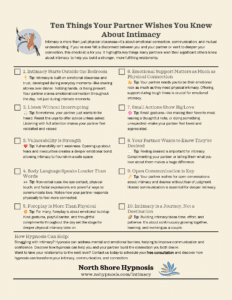
Sexual Pain Disorders
Sexual pain disorders are a group of conditions that can significantly impact a person’s sexual functioning, causing discomfort and distress during sexual activity. These conditions can affect both men and women and can be caused by a variety of factors, including physical and psychological issues. This blog post will explore the different types of sexual pain disorders, their symptoms, causes, and treatment options.
Types of Sexual Pain Disorders
Several types of sexual pain disorders can affect both men and women. The most common types include:
- Dyspareunia: This is a condition in which a person experiences pain during sexual intercourse. The pain may occur during penetration or be felt deep inside the pelvis.
- Vaginismus: This is a condition in which the muscles around the vagina spasm, making penetration difficult or impossible. This can cause pain and discomfort during sexual activity.
- Vulvodynia: This chronic pain condition affects the vulva, the external female genitalia. Women with vulvodynia may experience pain, burning, or itching in the area, which can make sexual activity uncomfortable or painful.
- Peyronie’s Disease: This is a condition in which scar tissue develops inside the penis, causing it to curve or become deformed. This can make sexual intercourse painful or difficult.
Symptoms of Sexual Pain Disorders
The symptoms of sexual pain disorders can vary depending on the type of disorder a person has. In general, however, the most common symptoms include:
- Pain or discomfort during sexual activity.
- Burning, itching, or soreness in the genital area.
- Difficulty achieving or maintaining an erection (in men).
- Vaginal dryness or tightness (in women).
- Anxiety or fear related to sexual activity.
Causes of Sexual Pain Disorders
The causes of sexual pain disorders can be physical or psychological. In some cases, the condition may be caused by a combination of both. Some common causes include:
- Physical trauma or injury to the genital area.
- Infections, such as yeast infections or sexually transmitted infections.
- Hormonal imbalances.
- Endometriosis or other reproductive disorders.
- Psychological issues, such as anxiety or depression.
- Relationship issues or sexual dysfunction in one’s partner.
Treatment Options for Sexual Pain Disorders
Treatment for sexual pain disorders will depend on the underlying cause of the condition. In some cases, treating the underlying cause may be enough to alleviate symptoms. For example, if an infection causes pain, treating the condition with antibiotics may resolve the issue.
More targeted treatment may be required for other conditions, such as Peyronie’s disease or vulvodynia. Some treatment options include:
- Medications: Depending on the cause of the sexual pain disorder, medications may be prescribed to manage symptoms. For example, women with vulvodynia may be prescribed topical creams or ointments to help manage pain and discomfort.
- Physical therapy: In some cases, physical therapy may be recommended to help manage symptoms. For example, women with vaginismus may benefit from pelvic floor muscle training, which can help to relax the muscles around the vagina.
- Counseling and Hypnosis: If psychological issues cause the sexual pain disorder, counseling or therapy may be recommended. This can help individuals to work through any underlying issues that may be contributing to the problem.
- Surgery: In some cases, surgery may be required to correct the underlying issue causing the sexual pain disorder. For example, men with Peyronie’s disease may require surgery to remove scar tissue and straighten the penis.
Conclusion
Sexual pain disorders can significantly impact a person’s quality of life, making sexual activity uncomfortable or even impossible. It is essential to seek medical attention if you are experiencing any symptoms of a sexual pain disorder. Treatment options are available and can help to alleviate symptoms and improve sexual function.
In addition to seeking medical treatment, there are also things that individuals can do at home to manage symptoms. For example, practicing good hygiene can help to prevent infections that can cause pain and discomfort during sex. Using lubricants during sexual activity can also help to reduce friction and discomfort.
It is also crucial for individuals to communicate openly with their partners about any sexual pain or discomfort they may be experiencing. This can help to reduce anxiety and improve intimacy in the relationship. Couples may also benefit from working with a therapist or counselor to address any relationship issues contributing to the sexual pain disorder.
In conclusion, sexual pain disorders can be a challenging condition to live with, but there are treatment options available. If you are experiencing any symptoms of a sexual pain disorder, it is vital to seek medical attention to determine the underlying cause and develop an appropriate treatment plan. With the proper care and support, individuals can manage their symptoms and improve their sexual function, leading to a happier and healthier life.
References:
American College of Obstetricians and Gynecologists. (2018). Vulvodynia. Retrieved from https://www.acog.org/patient-resources/faqs/gynecologic-problems/vulvodynia
Mayo Clinic. (2020). Sexual pain in women. Retrieved from https://www.mayoclinic.org/diseases-conditions/sexual-pain-in-women/symptoms-causes/syc-20376189
Mayo Clinic. (2020). Peyronie’s disease. Retrieved from https://www.mayoclinic.org/diseases-conditions/peyronies-disease/symptoms-causes/syc-20353468
WebMD. (2021). Painful sex (dyspareunia). Retrieved from https://www.webmd.com/sex/painful-intercourse-dyspareunia
WebMD. (2021). Vaginismus. Retrieved from https://www.webmd.com/women/guide/vaginismus-causes-symptoms-treatments
Learn Ten Things Your Partner Wishes You Knew About Intimacy

Do you want to have better intimate relationships? Discover ten things your partner wants you to know to have more fulfilling relationships.
Click now for your free checklist, “Ten Things Your Partner Wishes You Knew About Intimacy.

